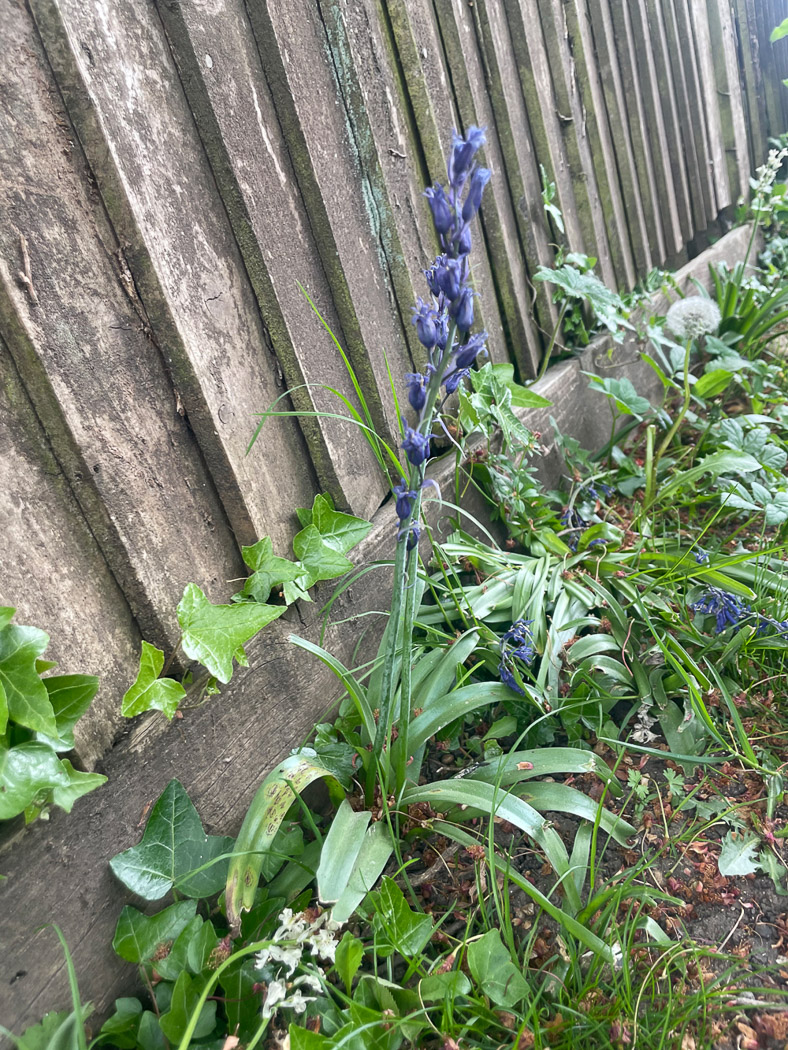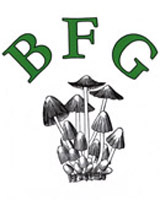U
|
|
| Uromyces betae (Beet Rust) |


 |
May 8, 2024.  In Stoke Poges Jesper Launder noticed a nice specimen of the plant Beta vulgaris (Sea Beet - photo 1), then on closer inspection found the plant pathogen which attacks it, considered a pest in commercial Beet crops as well. Though not rare - there are abound 40 FRDBI national records - this is a new entry for Finds. In Stoke Poges Jesper Launder noticed a nice specimen of the plant Beta vulgaris (Sea Beet - photo 1), then on closer inspection found the plant pathogen which attacks it, considered a pest in commercial Beet crops as well. Though not rare - there are abound 40 FRDBI national records - this is a new entry for Finds.
|
Uromyces ficariae (Bitter Chocolate Rust)  |

 |
Mar 30, 2024. At Turville Heath Penny found this second fungal species on Lesser Celandine. This is a host specific Rust and was affecting many plants on both stems and undersides of leaves. It English name refers to a later stage of this rust which is no longer rusty but dark brown. An earlier Finds entry shows this later stage. It is very common in spring but appears to do no permanent damage to the plant. |

 |
May 13, 2021. Claudi Soler noticed these dark patches on living leaves of Ranunculus ficaria (Lesser Celandine) at Dancersend. This is a relatively common Ascomycete species and is host specific to this plant, occurring in Spring. |
Uromyces muscari (Bluebell Rust)  |


|
May 8, 2025. This is a species Sarah Ebdon found for the first time last spring, and has therefore been on the lookout for. After many recent unsuccessful searches she eventually found it on a native bluebell near a fence in the Amersham area. (Apologies here for a non fungal point of interest: there is often discussion about the detrimental effect the non-native 'Spanish Bluebell' might be having on our native Hyacinthoides non-scripta, but a recent paper has in fact proved otherwise. If interested, go to https://nph.onlinelibrary.wiley.com/doi/full/10.1002/ppp3.10387 for more.)
|

 |
Apr 26, 2024. At Stoke Poges Memorial Gardens Sarah Ebdon was on the lookout for rusts on plant leaves and quickly spotted this one showing nicely on several Bluebell leaves. Knowing your plants helps a great deal with naming rust fungi because they are very often host specific though the species name here implies a different host which is somewhat confusing! It is very possible that this particular species when found on Bluebell - probably its commonest host - will be given a different name at at some stage. Our very few county records reflect how little recording of such fairly common species in spring goes on here. This is a new entry for Finds.
|
| Ustilago avenae (False Oatgrass Smut) |

 |
May 31, 2023. On Gerrards Cross Common Jesper Launder was on the lookout for smuts on grassy vegetation and came across two species he recognised - both of which he found in June 2021 when they were new to the county though neither are at all rare, just easily overlooked. |

 |
Jun 28, 2021. On his usual dogwalk around Jordans village Jesper Launder noticed this inconspicuous species growing on False Oat Grass. Though not a rarity this is a new species for the county, sadly reflecting the lack of local mycologists looking out for such species. Smuts are parasitic fungi found on grasses and are often host specific, thus if you know your grasses it makes identification of the smut species much easier. |
| Ustilago striiformis (Stripe Smut) |
 |
Jun 10, 2024. In Gerrards Cross Common Jesper Launder spotted this species on the patches of Holcus mollis (Mollie's Hairy Knees) - such a great English name! In fact the 'hairy knees' referred to are clearly visible at the bottom of his photo! This Smut is a complex of species which will no doubt in time be split according to its host as it can occur on various different grasses. |

 |
May 31, 2023. This is the second Smut Jesper species Jesper Launder found and recognised today in the grassy vegetation on Gerrards Cross Common though he was unable to specify the host plant as it was so affected by the fungus. |
 |
Jun 6, 2021. In his garden lawn which he has been allowing to grow recently Jesper Launder identified this smut on the perennial grass Yorkshire Fog (Holcus lanatus). This apparently is a complex of species found on various grasses at this time of year and though not considered rare we appear to have no previous county records. |




















